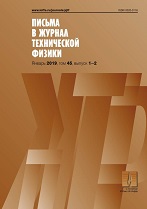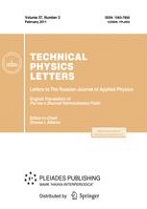|
The effect of $d$-element traces on the electronic structure of cathodes in microwave devices
V. I. Kapustina, I. P. Lib, A. V. Shumanovab, S. O. Moskalenkoab, R. R. Zalyalyeva, N. E. Kozhevnikovab
a MIREA — Russian Technological University, Moscow
b JSC Pluton, Moscow
Abstract:
It has been experimentally established for the first time using electron spectroscopy for chemical analysis that traces of $d$ elements (W, Re, Ni, Pd, and Os) in BaO crystallites contained in cathodes of microwave devices lead to the formation of the donor surface states on the crystallite surface, which can partially compensate the acceptor surface states caused by surface oxygen vacancies, which reduces the potential barrier on the crystallite surface and, consequently, the cathode work function.
Keywords:
cathodes of microwave devices, barium oxide crystallites, $d$-element traces, donor and acceptor surface states.
Received: 15.08.2019
Revised: 15.08.2019
Accepted: 28.10.2019
Citation:
V. I. Kapustin, I. P. Li, A. V. Shumanov, S. O. Moskalenko, R. R. Zalyalyev, N. E. Kozhevnikova, “The effect of $d$-element traces on the electronic structure of cathodes in microwave devices”, Pisma v Zhurnal Tekhnicheskoi Fiziki, 46:3 (2020), 6–9; Tech. Phys. Lett., 46:2 (2020), 106–109
Linking options:
https://www.mathnet.ru/eng/pjtf5192 https://www.mathnet.ru/eng/pjtf/v46/i3/p6
|


| Statistics & downloads: |
| Abstract page: | 47 | | Full-text PDF : | 23 |
|





 Contact us:
Contact us: Terms of Use
Terms of Use
 Registration to the website
Registration to the website Logotypes
Logotypes








 Citation in format
Citation in format 